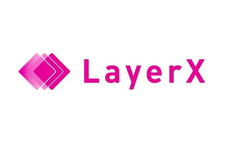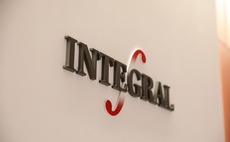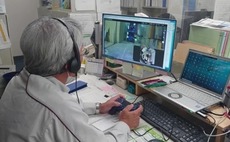
Q&A: IMM Private Equity's Joseph Lee
IMM Private Equity’s Joseph Lee discusses the new sectors taking focus away from Korea’s traditional manufacturers, along with the potential for tender offers, IPOs and secondary sales in the market
Q: What sectors in Korea are most attractive from an investment standpoint?
A: The momentum of the Korean low-tech manufacturing sector is decreasing as the competitive advantage shifts toward the labor-cheap countries like Vietnam or China. This is driving a shift toward what we call new wave industries. Clearly the affinity of young Asian consumers for Korean content, be it movies, TV drama, games or music, is very interesting. People may then see what those Korean performers are wearing and want to buy their fashions as well, and as Korean culture becomes more popular I think we'll see some food and beverage brands become interesting too. So, if we want to pick the new wave industries that could potentially grow well, I'd say content, fashion, cosmetics, F&B, and also healthcare and software.
Q: How have IMM's investments reflected this shift?
A: I'd say about a third of our capital is in these new wave sectors that will eventually share the responsibility with the manufacturing sector with respect to Korean economic growth. One of our investments is in an internet cartoon company called Lezhin that's been growing at 30-40% a year since we invested in 2016. Last November, we also invested in a company called W Concept, which is one of Korea's leading online women's fashion shopping sites. We were attracted to this company because it was already cash flow positive, rather than relying on valuation per subscriber or valuation per viewer. In F&B, we invested in Hollys Coffee in 2013, and we continue to look for opportunities in that sector as well. In addition, we have several pharmaceutical investments we made a few exits recently.
Q: Are there segments in manufacturing where Korean operators will remain competitive?
A: We divide the sector into those companies that have a competitive advantage, such as a technological innovation or locked-in customer relationships, and those where the technological advantage isn't there anymore, or where customers don't look at quality and just seek the cheapest price. If the area you're looking at is highly commoditized, then it's very difficult for private equity to go in, because it will be hard to use price increases or dynamic pricing as a value creator. If you cannot be a price maker, and you can only take the price that's in the market, then obviously there's a lot of risk from a private equity perspective. We've looked at many manufacturers in Korea, and that angle is always very difficult for us to get past the investment committee.
Q: How does IMM's investment last year in shipbuilder Hyundai Samho Heavy Industries fit into this?
A: For the high-end ships – not just the simple container vessels but ships that carry oil or LNG gas, or ships that have a lot of technology involved in their construction – Korea and Japan still have an advantage against developing countries that compete mainly on labor cost. Hyundai Samho is very strong on high-end, high value-added ships and we felt that set them apart in terms of barriers to entry and their ability to set pricing. We had been tracking the company and the sector for many years, and we felt very comfortable going in. The valuation was decent, but it was also building up a strong order book due to its technological prowess, and we believed that would lead to strong revenue and profits over the coming years.
Q: IMM's investment in cosmetics maker Able C&C last year was the first time a tender offer was used in conjunction with a control stake acquisition in Korea. What role do you see for tender offers in Korea?
A: Korea is unique in that we don't have a mandatory tender offer rule – once you lock in control, there's no incentive to offer to buy out other shareholders. With Able C&C, because it is one of our more operational improvement-intensive investments, it was important for us to get to over 50% shareholding so that we had full control, but the founder only had a 30% stake. While we did not need to reach the privatization threshold of 95%, we thought that if we could get to 55-60% that would let us capture more upside for our LPs, and we did that through our tender offer. It's a few years out from the tender offer being used for take-private situations, but if the goal is to get to more than 50%, like we did with Able C&C, then in those cases a tender offer could be very interesting.
Q: How is the exit market evolving in Korea? Are IPOs likely to become more popular?
A: We've now done 12 full exits, so we take a lot of pride in the fact that we've shown to our LPs, both domestic and international, that the Korea market is very liquid. I think in emerging markets you need to be a bit more patient in terms of duration of the investment, but here in Korea an exit event within four to five years is something that's quite doable. For us, trade sales have been a traditional exit route, but I think IPOs are becoming more interesting. In the past, the Korean Stock Exchange was quite conservative regarding private equity-backed offerings, because their thinking was that if the largest shareholder leaves through an IPO then the company becomes ownerless and the management may lose focus. But as regulators understand the private equity model better they have become more open to PE-owned companies' IPOs. MBK Partners' exit of ING Life last year was a great example of that, and I think the market will continue to grow.
Q: How about the secondary route?
A: The regional and global funds are coming back to Korea, they're opening new offices and putting teams together, and obviously they write bigger checks than we do. I wouldn't be surprised if we see a healthy chain develop where Korean VC investors help a company become a growth capital candidate; then growth capital comes in, the company becomes bigger, and a midcap PE player acquires it; and then when the company is ready to be a global or regional player, ownership is handed over to a global or regional firm, which does value-add outside Korea. It hasn't happened yet – it's still an exit route that needs to mature and be proven. The two private equity firms, the seller and the buyer, must show a very differentiated value creation strategy. If you have the same strategy – say, to squeeze costs –the first firm has already done that, so it's very hard to justify the valuation. I think if PE secondary buyers can exhibit different ways to add value, then the LP community will accept that.
Latest News
Asian GPs slow implementation of ESG policies - survey
Asia-based private equity firms are assigning more dedicated resources to environment, social, and governance (ESG) programmes, but policy changes have slowed in the past 12 months, in part due to concerns raised internally and by LPs, according to a...
Singapore fintech start-up LXA gets $10m seed round
New Enterprise Associates (NEA) has led a USD 10m seed round for Singapore’s LXA, a financial technology start-up launched by a former Asia senior executive at The Blackstone Group.
India's InCred announces $60m round, claims unicorn status
Indian non-bank lender InCred Financial Services said it has received INR 5bn (USD 60m) at a valuation of at least USD 1bn from unnamed investors including “a global private equity fund.”
Insight leads $50m round for Australia's Roller
Insight Partners has led a USD 50m round for Australia’s Roller, a venue management software provider specializing in family fun parks.








